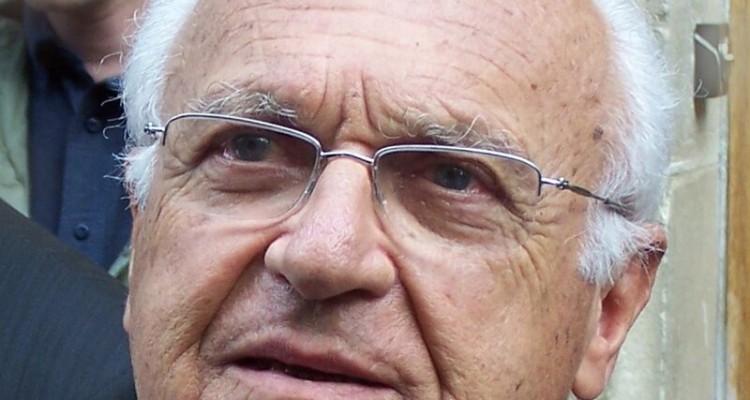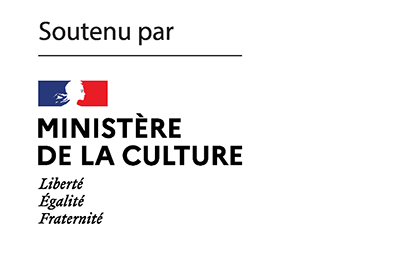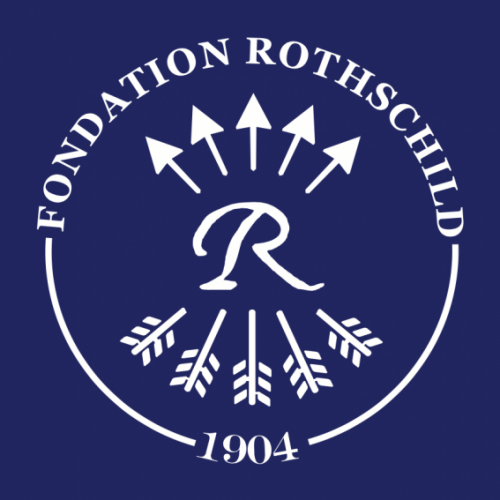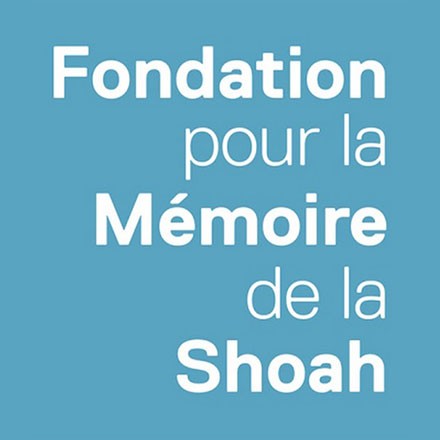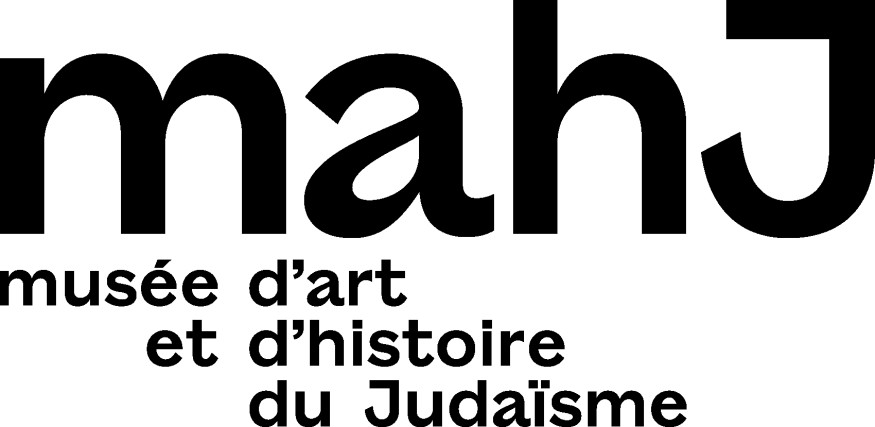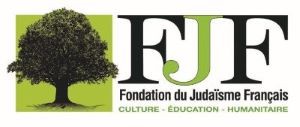Jakub Nowakowski, historian and director of the Galicia Jewish Museum, presents a general picture of Poland’s relationship with the Jews since the Shoah. After a long period of appropriation of Jewish space, but also of Jewish history and memory in Poland, he observes a new interest in Jewish history in Poland since the eighties. In recent years, the taboo on Jewish-Polish history seems to have been overcome. However, a new issue is emerging through the current attempts to instrumentalize this history for the benefit of a whitewashed narrative marshaled by polish nationalism and championed at the highest levels of power. In the context of these major controversies, the author also recounts the difficult attempts to renew Jewish life in today’s Poland.
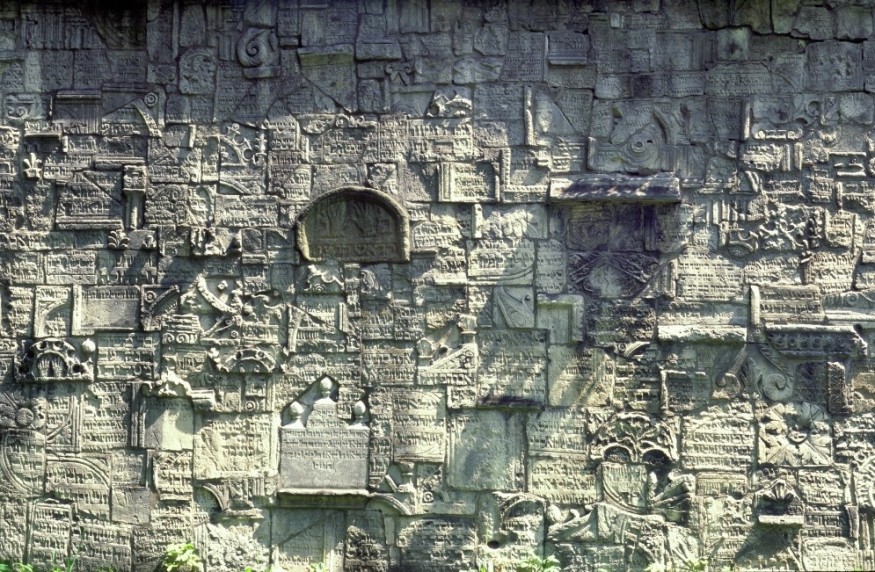
What shapes contemporary Polish-Jewish relations is not just events directly from the period preceding the Second World War and from the war itself, but also a number of processes which, though they began during the Holocaust, have lasted until now.
What I think connects these processes is their appropriative nature – which in many ways for me appears to be a kind of colonization process – resulting from the fact that only a very small number of Jews remained in Poland after the Shoah and the mass exodus of survivors after the war.
The appropriation of post-Jewish space
The appropriation of post-Jewish space began during the Holocaust and took place in the whole of occupied Europe. The difference was in the fact that in Western Europe Jews most often disappeared from the landscape – deported to the “mythical East” or to the concentration camps. Their death did not happen in plain sight; therefore, the uncertainty of their fate, at least officially, might have been much bigger than in occupied Poland. Here, they were often dying “in broad daylight,” before the eyes of the local people. The attitudes of those local communities to Jews varied – their reactions were anything from attempts to help, through passiveness (which might have been characterized both by sorrow and despair as well as undisguised satisfaction), to active participation in persecutions and crimes. However, regardless of the attitudes, the local communities were mostly aware of what was happening to the Jews (or they were becoming aware of the fact during the war). It seems that the knowledge that the Jews would never return was common particularly in the countryside, where victims were murdered by Einsatzgruppen. We know increasingly more about the attitudes of the local people thanks to the works of a number of historians such as Jan Tomasz Gross, Jan Grabowski, Barbara Engelking, Dariusz Libionka, Łukasz Krzyżanowski, and others[1].
In a local dimension, the awareness of the mass killings of Jews made the issue of the abandoned possessions become of a specific nature. It was no longer a question of morality, but – particularly in the countryside – of pure thrift and plain calculations. What to do with a house, furniture, clothes, or even a plot of a neighbor murdered along with other Jews.
What happened was mass appropriation of post-Jewish space: houses, shops, plots, accompanied by the looting, or takeover, if you prefer, of personal property – furniture, clothes, tools, religious objects, etc. Of course, we need to be aware that, from today’s perspective, in many places that property had little value. It is always better to have shoes though, even worn out and full of holes, than not to have shoes at all.
We have become the new owners of movable and immovable property as a result of the appropriation of post-Jewish space. However, in the face of post-war antisemitism and the policies of the communist authorities, it quickly transpired that we would happen to receive the role of guards of memory or, perhaps even more so, of the lack of memory. Due to time limitations, I will not discuss post-war politics and the events that led to the decay of Jewish social and cultural life in post- war Poland but I will focus on only one consequence of those processes – the communist authorities and the local communities taking over the task of commemorating the victims of the Holocaust and the Second World War. As we all know very well, the task soon changed from commemorating the victims to obliterating all traces of their memory, which was not only politically justified in post-war Poland, but also, in the context of the seized property mentioned earlier, it had an economic dimension and often a personal one. Of course, the local people had every right to view wartime history through the prism of “their own” victims – family members and people close to them, who were lost or murdered. When one is suffering, it may be difficult to show empathy towards other victims.

Post-war reality was conducive to mass amnesia. What survived – the synagogues, cemeteries, workplaces – was being taken over by the new owners or the state. Pieces of not-too-distant Jewish past became the foundation of the coming Polish future, sometimes quite literally, as matzevot from Jewish cemeteries have been found in foundations of buildings, in roads and walls. The remains of the Jewish world we did not want to remember have been callously used by us – the synagogues became fire stations, cemeteries – rail or bus stations or parks.
The Jews excluded from the Polish memorial narrative
The society wounded by the war wished to forget, but the victims required at least some symbolic commemoration, any substitute of the process of healing. This process was incredibly complicated in post-war Poland – the communist government had its own vision of the past and this selective and falsified narrative was to become, and did become, the only available rendering of the past.
This also applied to issues relating to the Polish Jews. Denied a voice and influence on the events taking place, fearing for their safety, cornered and attacked, they were omitted in the new story of heroism and martyrdom of the Polish nation. Their voices, their pain and trauma, sorrow and anger were replaced with our voices, our pain, our sorrow and anger. We have we have made our own not only the post-Jewish space but also Jewish trauma; we have taken over the “copyrights” to its description and due to that, we have conveniently given ourselves in the main part—of the only and always crystal clear victim. This narrative – our narrative – has become the foundation of the new, post-war Polish People’s Republic.
While it was possible for both stories to coexist until late 1940s (with two monuments dedicated to the heroes of the Warsaw Ghetto or – in a local dimension – a small monument in Zbylitowska Góra), the ‘50s and ‘60s brought gradual elimination of Jewishness from the public sphere. The monuments, even the ones located in places where the majority of the victims were Jewish, e.g. main monument in Zbylitowska Góra and in the concentration camp in Płaszów, lacked any mention of the Jews. They were instead replaced by enigmatic expressions such as “victims,” “citizens,” “the fallen,” etc.
Consequently, it was we who described the past and in that portrayal there was no space for heroes and victims other than our own. We decided unilaterally that if we were all victims, we could not have been the oppressors – as if it was not possible to be a victim and an oppressor at the same time.

Therefore, having made our own the present – the physical space of post- war Poland – we also made our own the past in the next stage. By removing Jewish issues from curricula, books, monuments, and museums, we fulfilled the dream of nationalists and antisemites. We described their ideal Poland – Poland without the Jews. And so what that this imagined Poland never really existed? This great lie was a convenient illusion which, on the one hand helped to ease consciences, and on the other hand boost the falling morale…This vision of white, nationalist Poland was a perfect emanation of all our fears and complexes.
Both processes – the appropriation of the narrative, i.e, the way of describing the past, and the appropriation of the memory, meaning the manner of commemorating that past – have had an enormous impact on how Polish-Jewish relations are perceived in contemporary Poland.
The consequences of these historic policies are clearly visible: according to a survey from 2015 by the Centre for Public Opinion Research CBOS, 45 percent of the respondents identified Oświęcim/Auschwitz as predominantly a place of torture of Poles and 33 percent considered it predominantly a place of torture of Jews. The 33 percent is actually a significant increase from the 18 percent who agreed with the statement in 1995 (again in a survey by CBOS).[4]
Appropriation even in language
Going back to the appropriation processes in post-war Poland, they concerned not only the issues relating to places or objects, but also other spheres, for example, the language. I was born and raised in Kraków’s district Kazimierz, where my family have lived for generations. In my family home and the whole tenement building, the kitchen ovens were called “szabaśnik” (a Sabbath oven). We had a “szabaśnik”, my neighbors had one, as did my friends from school. Only much later did I learn that my friends from other districts of Kraków had no idea what “szabaśnik” was… The word somehow survived the Holocaust, having lived longer than the people who had used it. And while the transfer of words between languages is not that unusual, it is important in the context of Polish-Jewish relations that the new inhabitants, kept the original word, while at the same time got rid of any historical context. So, on the Sabbath ovens of post-Jewish flats of post-Jewish Kazimierz food was prepared by Catholic mothers for their Catholic children that had no idea of the Jewish past of their district.
Another example of such intuitional memory is an issue relating to football. Kazimierz – the old Jewish district – is today the bastion of the most fervent fans and hooligans of Cracovia, one of the two main football teams of Kraków and the oldest football club in Po- land. Cracovia, unlike its rival – Wisła Kraków – was an open club and Jews were among its founders and main footballers. 110 years later, the fans of the team write JG (Jude Gang) with pride on the walls of Kraków’s buildings. In my opinion, what we are dealing with here is again appropriation – the past of the football club has been appropriated by the new users who use its elements without any true awareness of their meaning. It is a bit like in old American westerns where the parts of Native Americans were played by white actors with painted faces, presenting their own, usually distorted and superficial, vision of that group.
The list of similar appropriation processes goes on – as children we would listen to stories by Jan Brzechwa, having no idea of his Jewish origin.
All these examples show, on the one hand, the dimension of Polish-Jewish coexistence and the scale of the influence Jews have had on the Polish history, and on the other, how easy it is to erase certain aspects of that history from the mass awareness of Poles growing up in the reality of the Polish People’s Republic, replacing them with a new, false vision of the past with which we can’t really cope with even today.

The changes during the eighties
The late 1980s saw lots of changes in Poland, changes that also applied to the matters relating to the memory of the Polish Jews about whom people suddenly started talking and writing. One example I refer to here is Jan Błoński’s essay entitled “Poor Poles Look at the Ghetto,” published in the weekly magazine Tygodnik Powszechny in 1987.[5] One year before that, in 1986, the Interdepartmental Research Centre for Jewish History and Culture in Poland was founded at the Jagiellonian University. Its director, Professor Józef Andrzej Gierowski, summed up the state of contemporary knowledge then by saying:
a lot of prejudice and ambiguities have grown around the history of the Jewish people in Poland, stemming from insufficient research on this topic. Therefore, the time has come for solid research of the past of the Jewish community in order to write the history of mutual interactions without prejudice and emotions.[6]
This diagnosis was as accurate as it was euphemistic. The end of 1980s is, of course, also the beginning of the Jewish Culture Festival in Kraków.
All these actions initiated a number of positive processes. As a result, Jewish matters began to appear in the public discourse for the first time in many years, sometimes as a bottom-up effect and at times quite the opposite – for example as a response to the “accusations” made by Jan Tomasz Gross. With time, this interest, though modest at first, turned into a trend in which what was happening was completely incredible in the context of the previous 30 years: from erecting monuments and plaques dedicated to the Jewish inhabitants of cities and towns, through synagogue renovations, tidying up cemeteries, founding Jewish studies, and the inclusion of the Holocaust and a trip to Auschwitz in the school curriculum, to building museums and, above all, the revival of Jewish life in Poland.
However, I believe that the processes discussed earlier, such as the appropriation of space, the narrative and memory, did not end with the fall of communism – they are still taking place. While the purpose was earlier to erase the Jewish past, today we often witness creations of an idyllic version of the history in which the Jews are of course present, but by being reduced to the role of the fiddler on the roof – an iconic, almost fairytale figure.
After the silence, the whitewashed narrative
What is becoming a threat is not only antisemitism but – paradoxically – the increasingly common artificial version of philosemitism. Selective and shallow admiration for the suddenly discovered Jewish culture, or rather its incomplete version stripped of any hues and nuances, which fits our vision of the past – of hospitable and big-hearted Poland bringing help and salvation. In this narrative Jews become a convenient tool with which we can manifest our generosity, courage, and sacrifice. We need the Jews because they give us crystal clear heroes we can really be proud of. So we put our Ulmas, our Sendlers and our Karskis on the shoulders of the Jews and make them carry these figures into the world as proof of our bravery and heroism.
The Righteous become a tool, a shield to protect us from any accusations – something that is particularly cynically used at the moment. We parade in the light of their courage, at the same time unscrupulously refusing to help those who need our help today.
We continue to make our own the past, this time not erasing the Jews from it, but giving them a very specific part to play. In the case of nationalist-Catholic narrative, this means the part of a passive recipient of our mercy who, instead of repaying us after the war with dedication and respect, pays us back with disgusting accusations of participation in the Holocaust, murders, and takeover of possessions, completely damaging our image in the world.
Examples of these contemporary appropriation processes are visible everywhere in Poland – “Jewish style” restaurants which were particularly popular at the end of the 1990s, which are still doing surprisingly well in many places; exhibitions in renovated synagogues where Jewish themes are placed between exhibitions of fossils, artefacts from Polish villages and pieces of an Allied forces’ bomber shot down during the Second World War. Festivals during which Jewish culture is reduced to Klezmer performances, Jewish cuisine and szmonces, not teaching but rather reinforcing the stereotypical image of the Jews which does not go beyond the narrow limits of our personal comfort zones.
The case of conferences and lectures is similar – in 2016 the Head of Galicia Jewish Museum’s Education Department was meant to participate in a conference organized by the museum in Chmielnik thanks to the support from the Polish Ministry of Foreign Affairs. The subject of the conference was “Whoever saves one life saves the entire world. Help offered to the Jews by Poles in 1939–1945 with particular focus on the Kielce region.” Among the titles of the lectures were:
– Reverend Professor Waldemar Chrostowski, Saving and Protecting Human Life in Judaism.
– Reverend Dr. Tomasz Siemieniec, Helping your Brothers: Catholic Teaching with Regard to Helping and Saving Human Life.
– Dr. Tomasz Domański, Poles’ Participation in Rescuing Jews in the Kielce Region Countryside 1939–1945.
– Marcin Florek, Miechów District’s Community in the Rescue Action for the Jews 1939–1945.
– Ewa Kołomańska, Unrighteous? Poles Rescuing Jews in the Country- side and in Cities that Have Not Been Awarded the Title of the Righ- teous Among the Nations.
– Dr. Marek Maciągowski, Kielce Shtetls. Poles Helping the Jewish Community in the Kielce Region 1939–1945. Selected Examples or the Outline of the Issue.
– Dr. Andrzej Kwaśniewski, Clergy Rescuing Jews in the Collections of the Diocesan Archives in Kielce.[7]

A revival of Jewish life in Poland ?
Please do not get me wrong – it is not that we should not talk about Poles helping Jews or about positive reactions of whole communities towards their Jewish neighbors, but talking about them without any context or mention of the fact that not everywhere a Pole met on the road meant rescue or even a kindred spirit, means distorting history.
If you need some consolation – the discussed trend currently coexists with the trend of authentic, deep interest in the Jewish history and culture. Kosher restaurants with Jewish or Israeli cuisine, excellent museums and cultural institutions: from the Jewish Historical Institute, POLIN Museum of the History of Polish Jews, through Galicia Jewish Museum, to even smaller establishments, such as Cukerman’s Gate in Bedzin or the Grodzka Gate – NN Theater Center in Lublin. The Jewish Culture Festival which has been providing the possibility of tasting the polyphony of the Jewish world with different senses. Wonderful teachers and local enthusiasts who become advocates of the Jewish past in their little fatherlands. And – most importantly – active Jewish communities with nurseries, schools, and cultural centers in Poland. Maccabi Warsaw represented Poland at the Maccabiah Games in Israel for the first time in decades. For the first time in many years we do have a generation of young Polish Jews who can and want to lead their lives in our shared country, bring up their off- spring here, and their voice is represented by a number of organizations and communities, both secular and religious.
There are a lot of reasons for satisfaction and optimism. However, there are also many reasons for concern. It is enough to look at what is happening on the streets of our cities – from marches of the National Radical Camp, through acts of violence towards people with a different skin color, to the construction of the myth of the “cursed soldiers” and the resolution of the Polish parliament glorifying the National Armed Forces. For the first time in many years everything is happening in broad daylight, with the support of the government whose member, the Minister of Education, does not want to or cannot admit who was behind the crimes in Jedwabne and the Kielce Pogrom.[9]
Luckily, contemporary Poland is not just Polish Catholics discussing Jewish issues with other Polish Catholics. Present-day Poland is also Jewish Poles discussing Jewish issues and Poland with other Jewish Poles.
The fall of communism and the beginning of democratic changes meant a new beginning for the Polish Jews. What will the new reality be like? Will the old demons of antisemitism return, or will openness and tolerance prevail? This was all uncertain when figures such as Stan Tymiński[10] and Leszek Bubel<footnote>Leszek Bubel (1957) – Polish politician, member of the Parliament of the first term (1991-1993). Known for his right-wing, nationalist, anti-Semitic and anti-European views.</footnote> were making their breakthrough on the Polish political stage in the early 1990s.
Another equally important problem for the few Jewish communities in new Poland was an almost complete lack of infrastructure need- ed for the revival of Jewish life, for example: kosher food (apart from vodka whose kosher types were very popular in the 1990s), mikvot, preschools, schools, rabbis, and teachers. There wasn’t enough money either…
The Holocaust and the four decades of communism irreparably broke the transmission belt with which generations of Polish Jews passed on knowledge on what it means and how to be a Jew. The whole universe of things that defined someone as a Jew – from small gestures and accents to issues completely fundamental – has been almost totally lost. And while the new reality offered a chance for reconstruction, Jews had to obtain the tools needed for the process themselves.
Therefore, the reconstruction of the Jewish world only became possible due to the support Polish Jews received in significant amounts from the West, mostly from America and the UK. Thanks to that support, it was possible to use the narrow window of opportunity and create the foundations on which the miracle of revival took place within the following 15 years.
The miracle of revival became possible as a result of a sort of blood transfusion between the Jewish communities of Western Europe and America and the Jewish community of Poland. Foreign rabbis, teachers, educators, leaders, and sponsors helped the community of Polish Jews find their way to Judaism. They naturally used the standards and pat- terns from their own environments in their work. In this way, our native carp Jewish-style was gradually replaced with hummus, which has started to become the symbol of modern Jewish cuisine. Leopold Kozlowski[11] lost his popularity to Matisyahu<footnote>Matisyahu (1979) – Matthew Paul Miller, known by his Hebrew stage name Matisyahu. American Jewish reggae Singer, rapper and alternative rock musician. His single „King Without a Crown” from 2005 was a Top 40 hit in the United States.</footnote> and Vilnius and Lviv were replaced by New York City and Tel Aviv as objects of longing.
Today, throughout Poland we see that this new idea of Jewishness, while quickly adopted by younger members of the communities, it is sometimes rejected by the older, whether the Holocaust survivor or the second generation.
These people do not long for the future but for the past. Their story takes place around graves and cemeteries, and has little to do with the narrative of the new generation which, to a large extent, desperately tries to get away from those graves.
This conflict about who really represents the Polish Jews is increasingly visible today and one of its manifestations is the rivalry between two contradicting narratives: one – not interested in the past, the other – in the future.
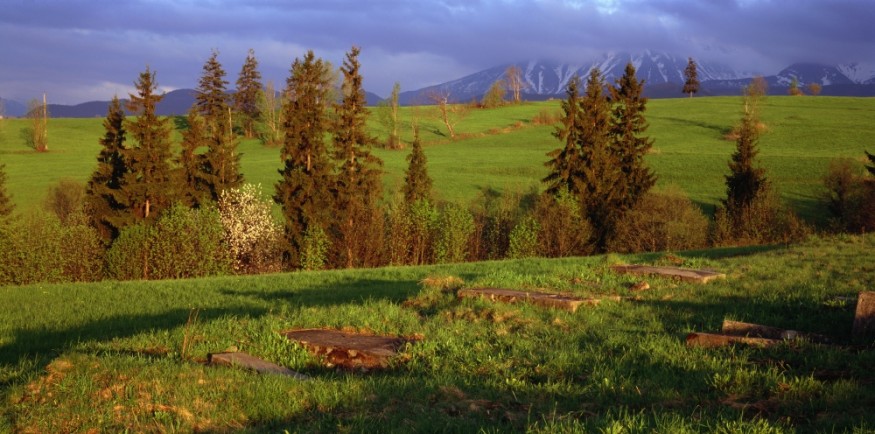
Who will then write the next chapters of this book of life and depict the past? Will the appropriation processes reach their end or will they continue, endlessly reshaping our memory, like waves are reshaping the banks of the seas, occasionally washing ashore from its abyss disturbing objects of the forgotten past.
*
Editor’s note: On the situation in Poland, see also the two-part article by Ewa Tartakowsky published in K. in September 2021: “The Polish “Righteous Among the Nations” in Markowa”.
Jakub Nowakowski
Jakub Nowakowski was born and raised in Kazimierz, the former Jewish district of Krakow. Coming from a non-Jewish family that lived in Kazimierz for generations, from an early age he was compelled to research the history of his neighborhood. In 2007 he graduated from the Department of Jewish Studies at the Jagiellonian University, where he wrote a thesis on Jewish resistance in Krakow during the Second World War. In 2010, he became the Galicia Jewish Museum’s director. Jakub Nowakowski is the co-author of Museum publications (among others): Poland: A Jewish Matter. He is also a curator of the Museum exhibitions (among other): “Fighting for Dignity. Jewish Resistance in Kraków”, “A City Not Forgotten. Memories of Jewish Lwów and the Holocaust”, “The Girl in the Diary, Searching for Rywka from Łódź ghetto”.
Notes
| 1 | Jan Tomasz Gross, Sąsiedzi: Historia zagłady żydowskiego miasteczka, Sejny, Fun- dacja Pogranicze, 2001. English version: Neighbors: The Destruction of the Jewish Community in Jedwabne, Poland, Princeton, Princeton University Press, 2001; Jan Grabowski, Judenjagd: Polowanie na Żydów 1942–1945: Studium dziejów pew- nego powiatu, [Judenjagd: Hunt for the Jews: Betrayal and Murder in Garman Occupied Poland], Warsaw, Stowarzyszenie Centrum Badań nad Zagładą Żydów, 2011; Barbara Engelking, Szanowny Panie Gistapo: Donosy do władz niemieckich w Warszawie i okolicach, 1940–1941 [Dear Mr Gestapo: Denunciations sent to the German Authorities in Warsaw, 1940–1941], Warsaw, Stowarzyszenie Centrum Badań nad Zagładą Żydów, 2003; Jan Grabowski and Dariusz Libionka (eds), Klucze i kasa: O mieniu żydowskim w Polsce pod okupacją niemiecką i we wczesnych latach powojennych, 1939–1950, [Keys and Cash: The Fate of Jewish Property in Occupied Poland, 1939–1950], Warsaw, Stowarzyszenie Centrum Badań nad Zagładą Żydów, 2014; Łukasz Krzyżanowski, Dom, którego nie było: Powroty ocalałych do powojennego miasta [The House That Was not There: The Returns of the Survivors to Postwar Towns], Wołowiec, Wydawnictwo Czarne, 2016. |
| 2 | |
| 3 | Jews and Poles, both of them victims of massive atrocities during the German occupation, tend to remember the catastrophes quite differently. Their separate memories hardly coincide, let alone offer a sense of shared suffering. In this forest outside Tarnów, where both Jews and Poles were brought (on separate occasions) to be shot into mass graves, there is a large monument erected by the state ‘in memory of its murdered citizens’. Holocaust survivors in Tarnów had previously erected their own commemorative stones, in memory of the Jewish victims. The two monuments seen here are alongside each other, in uneasy coexistence. |
| 4 | “Komunikat z Badań nr 11/2015” [Release from the research No. 11/2015], CBOS, Warsaw, January 2015. |
| 5 | Jan Błoński, “Biedni Polacy patrzą na getto” [The Poor Poles Look at the Ghetto], Tygodnik Powszechny, No. 2, 1987. |
| 6 | Instytut Judaistyki, URL: http://www.judaistyka.uj.edu.pl/instytut/historia [ac- cess 27.12.2017]. |
| 7 | “Kto ratuje jedno życie, ratuje cały świat” [Whoever Saves One Life Saves the World Entire], conference’s program, Chmielnik, October 4–7th 2016, URL: http://chmielnik.com/asp/pl_start.asp?typ=13& sub= 0& subsub=0&menu=509&artykul=5585&akcja=artykul [access: 27.12.2017]. |
| 8 | The cross and the Star of David on this memorial, in a remote field in the forest near the village of Brzostek, marks the mass grave of seven people ––six Jews, members of one family, and one Catholic Pole called Jan Jantoń. The Jews had been hidden by Jantoń in an underground shelter in the forest here, and he regularly brought them food. But he was betrayed by an informer, and the Germans arrived and shot the whole group. |
| 9 | “Kompromitacja minister Zalewskiej: Nie wie kto mordował Żydów w Kielcach i Jedwabnem?” [Disgrace of Minister Zalewska. She doesn’t know who mur- dered Jews in Kielce and Jedwabne?], Newsweek, July 14th 2016, URL: http:// www.newsweek.pl/polska/minister-anna-zalewska-nie-wie-kto-mordowal-zy- dow-w-kielcach-i-jedwabnem-,artykuly,391895,1.html [access 27.12.2017]. |
| 10 | Stan (Stanisław Tymiński, 1948) – A widely unknown Polish entrepreneur from Peru, Stanisław Tymiński, was a candidate for president in the first democratic presidential election after the fall of communism, in 1990. Despite the lack of political background, extreme views, and accusations of anti-Semitism, he defeated the distinguished anti-communist activist and first prime minister of independent Poland, Tadeusz Mazowiecki, in the first round of the elections. In the second round, however, he lost the election to Lech Walesa, the leader of Solidarity, who became a president. |
| 11 | Leopold Kozlowski-Kleinman (1918-2019) – Polish pianist, composer, the last representative of pre-war klezmer in Poland, called “the last klezmer of Galicia”. In 1991 he conducted the first concert of Jewish songs at the Temple Synagogue in Krakow. He gave concerts all over the world, he wrote music for films, plays and musicals (among others “Skrzypek na Dachu”). Holocaust survivor. |
| 12 | Part of the abandoned Jewish cemetery of Zakopane, a resort town at the foot of the Tatra mountains in southern Poland, famous especially for winter sports. It was popular with Jewish visitors of all ages, and many Jewish youth groups held summer and winter camps there. The small resident Jewish population became an independent community only in 1939, just months before the German invasion. Zakopane was captured on the first day of the war, and in mid-1940 all the Jews were deported. But the ruins of its cemetery (re-fenced in 2004 as a private Jewish initiative) demonstrate that there once was a Jewish presence in this area, even if the memory of Jewish Zakopane has all but disappeared—the synagogue was destroyed, and the cemetery is still not marked on local city maps. |


